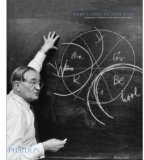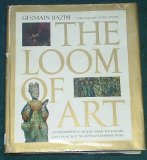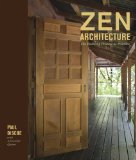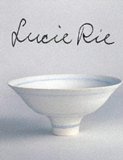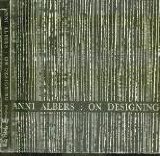More insightful answers to the question: “Is there a book that has had a particular influence on your work or decision to pursue art as a career?”
Thanks everyone for your help.
Adela Akers: Textiles of Ancient Peru and Their Techniques by Raoul D’harcourt (Univ of Washington Press, 1974; Dover Publications, 2002). I discovered this book in the Public Library in Chicago around 1958. It was a reference book and only in French. Later it was translated in English, and a few years later it was reprinted. Wonderful examples, history and diagrams; there’s nothing like it. It was like my bible. Not sure if it still available. There are many other books on Philosophy and Architecture that I would recommend, but the D’harcourt book was the most influential.
Randy Walker: There are many books that have inspired me. Here are two: Mark Tobey published by the Museo Nacional Centro de Arte Reina Sofia, 1997. The intricate, two-dimensional paintings of Mark Tobey give me a continued faith in the inexhaustible potential of delicate lines to create rich, three-dimensional spaces. A bounding framework, filaments, color and light can provide a lifetime of artistic exploration. This book is one of my most coveted possessions. Also, The Book of Looms: A History of the Handloom from Ancient Times to the Present by Eric Broudy( Littlehampton Book Services Ltd., 1979; Published by the University Press of New England, 1993). This book is absolutely fascinating from a visual, historical, and technical point of view. The forms of looms have inspired me as sculptural elements in themselves. Understanding the evolution of their forms in a cultural context is invaluable. I have to imagine this book of interest to non-fiber people as well as serious fiber artists.
Mary Giles: Agnes Martin: Writings, ed. Dieter Schwarz (Hatje Cantz Publishers; Bilingual edition 2005). Agnes talked about waiting for inspiration… and waiting…and waiting…and waiting. She also spoke of not having unnecessary distractions in your life such as pets and unnecessary friends. I put my husband and the two cats up for adoption but so far no takers.
Lia Cook: On Being Certain: Believing You Are Right Even When You’re Not, by Robert A Burton, M.D. (Reprint edition, St. Martin’s Griffin, 2009) is a book I have read recently that I think will be influential going forward. I am interested in emotional responses to visual perception of handwoven works. It is perhaps tangential to my main focus but nevertheless important to the research process.
Glen Kaufman: One book I recall reading when i was working in ceramics prior to fiber was A Potters Book by Bernard Leach (Faber & Faber 1988).
Nancy Moore Bess: How to Wrap Five Eggs: Traditional Japanese Packaging (and all of its variations)(recent reprint, Weatherhill, 2008) had a HUGE influence on my work. The Japanese have a wonderful way of using indigenous materials to wrap things…packaging, transporting, presenting. Even now, years later, the influence of these old techniques prevails. This book and its information, not basketry nor bamboo, drove me to Japan in the first place. Who knew it would have such a profound influence on my work? If you look at some of the earlier work I exhibited through browngrotta arts, you’ll see Japanese packaging everywhere. In New York, the recent reprint can be found in Kinokuniya Bookstore on 6th Avenue. Love that place!
Lena McGrath Welker: Buddha Mind in Contemporary Art (University of California Press, 2004) is the absolute cornerstone of the project I have worked on for six years for the North Dakota Museum of Art. The book contains a series of papers and artist interviews that resulted from a year-long project all up and down the west coast (why not Portland???) in which Jacquelynn Bass and independent curator Mary Jane Jacobs looked at how curators shy away (to say the least) from work that has anything to do with spirituality. There were several retreats at a Zen Center in California, where papers on the topic were delivered. There’s more information about the project on the UC Press website. As to pursuing a career, I never really did that. I do what I do because I have to. It is what keeps me in the world.
Ethel Stein: Josef Albers: To Open Eyes by Frederick A. Horowitz and Brenda Danilowitz (Phaidon Press, 2009) It’s an account of Albers’ teaching at the Bauhaus, Black Mountain College and Yale. I took a summer course with him at Harvard when I lived in Cambridge and this book sums up some of the thing he had us do. It was very exciting.








